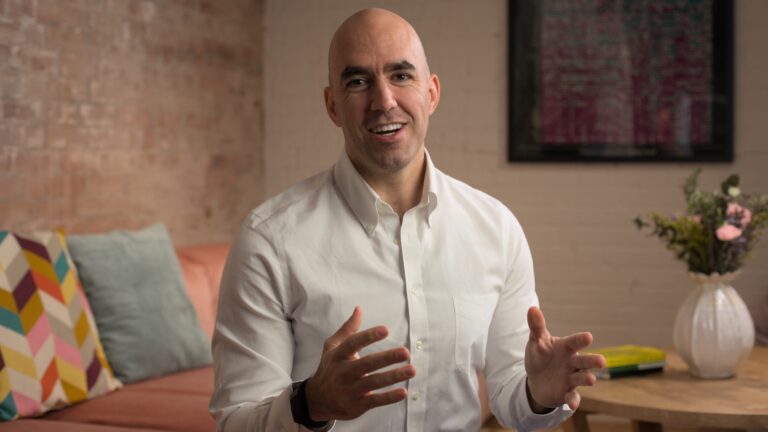Season 5: Innovating for impact
Trendspotting for small businesses

“The future is already here. It’s just not evenly distributed”
William Gibson
In today’s commercial landscape, the ability to anticipate and adapt to emerging trends is essential to success.
In this part we will delve into the essence of trends, the distinction between trends and signals, and spot some trends ourselves.
What is a trend?
Firstly, let’s define what a trend is. A trend is an increase or decrease in something that can be observed. It represents a perceived change. A change that has society or individuals heading in a new direction.
Let’s consider a few examples of trends:
- The rise of e-commerce and online marketplaces
- The growth in sustainability and environmentally conscious consumers
- The increased popularity of remote or flexible working arrangements
How to spot a trend?
To spot a trend you need to first spot a signal. These are indicators or markers that give you an early warning as to the onset or progression of a trend. By spotting them you can anticipate the bigger changes that are to come, and get ahead of them.
There are two types of signal: strong signals and weak signals.
Strong signals: Strong signals are conspicuous, well-defined indicators of an establishing trend. They are backed by robust data, clear patterns and widespread recognition within relevant communities.
For instance, the exponential growth in demand for electric vehicles or the mainstream adoption of blockchain technology are strong signals of broader trends towards sustainability and decentralised systems.
Weak signals: Weak signals, on the other hand, are subtle, ambiguous or nascent indicators that may not yet be widely recognised or understood. They require keen observation, critical thinking and contextual analysis to discern their significance.
Examples of weak signals include niche consumer behaviours, emerging technologies in their infancy, or fringe cultural movements that have the potential to gain traction over time.
Where to look for signals?
Trendspotting is not merely a passive observation, it is an active pursuit of insight, foresight and innovation.
So, when you can, look for signals that suggest either an emerging or newly established change that could impact your business or provide an opportunity. There are numerous places to look for inspiration but here are 6 of my favourites that I can suggest for you too:
- Art exhibitions and galleries: art exhibitions, galleries and art publications are good for observing emerging themes, styles and cultural movements. Artists are often the first to reflect changing societal values, aspirations and trends.
- Film and literature: keep an eye on new releases in film, literature and other forms of storytelling. Look out for new stories and messages about how we see the world around us.
- Trade shows and conferences: industry-specific trade shows, conferences and networking events help you to stay abreast of the latest innovations, technologies and market trends within your sector.
- Business news: articles and analyses that look ahead to the future of certain industries or sectors and cover the competitor landscapes, changing consumer behaviour and the data underlying any market dynamics.
- Google alerts: alongside looking at the daily or weekly news on TV or in print, set up a ‘Google Alert’ for any words you think are important to your business, product or industry in order to keep track of innovations.
- Social media platforms: online forums and community groups allow us all to view trending hashtags, memes, and discussions relevant to our industry.
I’d recommend using a small notebook or set up a simple spreadsheet to jot down what you observed and any insights about your signals of change. Try to give your trends a name and see if that helps suggest a new product or service.
By honing your ability to spot signals, interpret trends and act decisively, you can steer your business towards sustainable growth and even greater success in an ever-changing world.
With that in mind, now it’s your turn.
TRY THIS:
Can you think of three signals or trends that might positively or negatively affect your business in the future?
Write them down today and over the next few days mention them to others in the business or in your network to see if they agree – or they may even come up with their own three trends.
Keep the list handy so you can glance at it during the work day.
Every business person is exceptionally busy and sometimes you will not have any time in the day to look around and observe signals and think about trends.
But if you can set aside some time to stop and notice what is changing (what we might call ‘trends’) then it will pay off. Let’s remind ourselves of the advantages of setting aside some time and space to do this.
Why should a small business care about these trends?
Trends offer invaluable insights into market demand, consumer behavior and competitive landscapes. By noticing, understanding and leveraging trends, businesses can:
- Stay relevant: aligning products, services and marketing strategies to appeal to a changing audience.
- Mitigate risks: recognising downward trends or shifts in consumer preferences so the business can pivot towards a new offer or audience when it needs to.
- Enhance competitiveness: being attuned to trends gives businesses a competitive edge and over time helps foster customer loyalty.
Trends help you decode what is happening in the world today. In the next part of my masterclass, I’ll show you the business importance of having a vision for the future.



Leave a comment